Have you ever heard of Alt Empordà? This area in northern Catalunya has a lot to offer, including wonderful hiking opportunities, natural and artistic heritage, and LOTS OF WINE! Here’s our Alt Empordà guide, including the best hikes in the region!
The name ‘Alt Empordà’ may not mean anything to you, but do yourself a favour – write it down, and keep reading this article till the end. It was one of our favourite travel surprises this year, and it may very well end up being one of yours too!
The region is located in northern Catalunya, along the coast, close to the border with France. The name ‘Empordà’ comes from Empúries, the ancient Greco-Roman town on the coast – if you want to know more about it, have a look at our post about sights along the GR1.
Empordà is divided in two separate comarcas (counties) – Alt Empordà, extending from the French border to L’Escala, and Baix Empordà, located further south.
Historically, Alt Empordà has always been a land of frontiers, where the Pyrenees meet the Mediterranean sea, and where the rugged coastline was the perfect hiding place for pirates and smugglers.
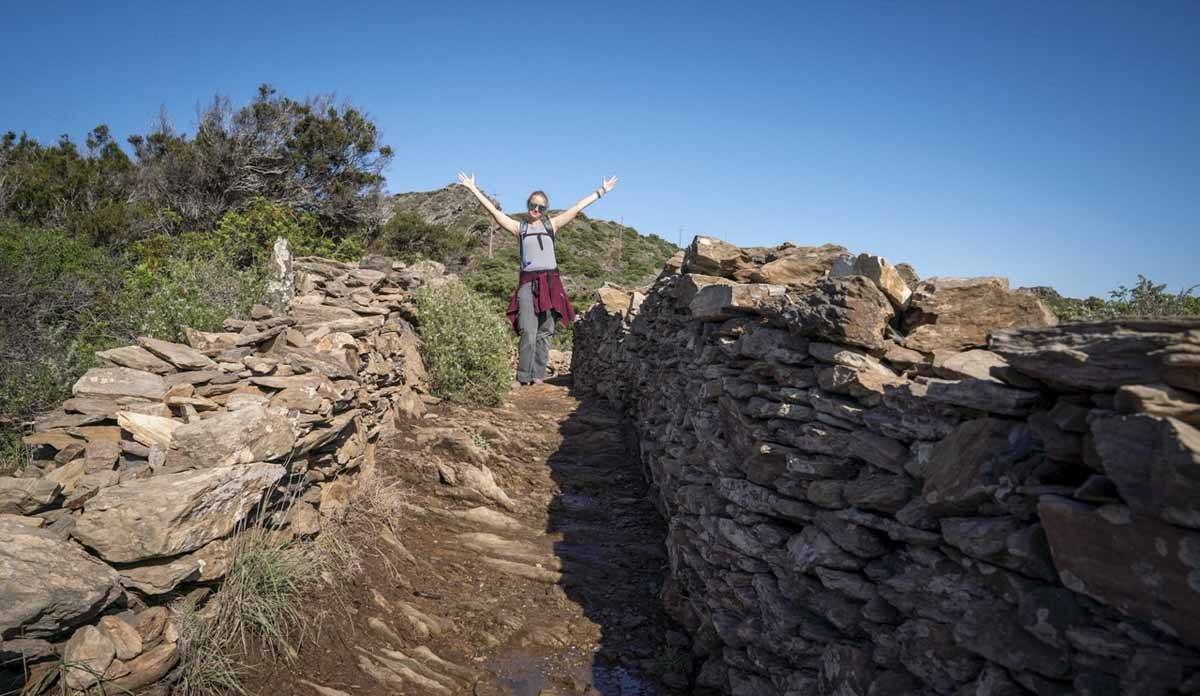
It’s also the prime wine growing region in Catalunya, and one of the places in the country with the highest degree of biological and landscape diversity – ranging from the peaks of the Pyrenees to the crystalline coves of Cap de Creus, from the swampy plains of Aiguamolls de l’Empordà to the agricultural lands in the Ampurian Plain.
Alt Empordà was the second region we visited during our recent trip to the Costa Brava/Pyrenees, after one week spent visiting and hiking El Ripollés.
The two experiences couldn’t have been more different – El Ripollés was all about exploring high mountains and sweeping vistas, whereas when we reached Alt Empordà we immediately felt the presence of the Mediterranean Sea, with the scent of maquis and salt in the air.
If you’re not a hiker, Alt Empordà also offers a lot to see and do – the picturesque village of Cadaqués and Salvador Dalí’s museum, delicious food and wine, and the opportunity to enjoy stunning coastal vistas. Keep reading to discover Alt Empordà!
Things to do in Alt Emporda
Stargazing at Observatori Astronòmic Albanyà
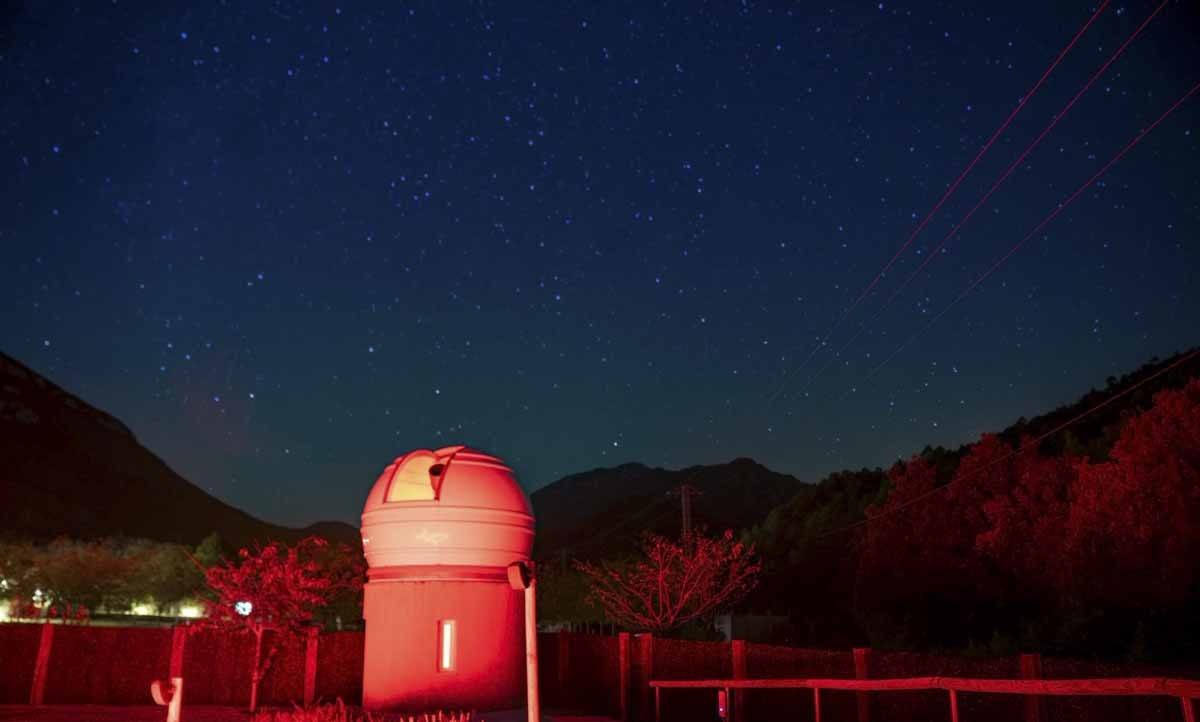
Are there any astrotourism lovers out there? You’ll be pleased to know that Albanyà, a town in Alt Empordà, is officially recognised as a Dark Sky Preserve by the International Dark Sky Association.
The reason is that Albanyà is surrounded by miles and miles of forests and mountains, with Figueres – the closest town – almost 30 km away. After spending a night in Albanyà, I can confirm that it’s very dark indeed!
This makes Albanyà and surrounds perfect for stargazing. If this sounds like something you’d like, we recommend staying at Camping Bassegoda Park and booking a stargazing session at the Observatori Astronòmic Albanyà, set up by a local astronomy-loving family.
Stargazing sessions take place in an outdoor amphitheatre, guided by two astronomers. The experience lasts about an hour and a half and includes a video presentation, observation of the night sky via telescope, and some time to just admire the stars.
Sessions take place throughout the year – make sure you don’t miss it if you’re visiting Alt Empordà!
Marvel at the Llançà Fish Auction
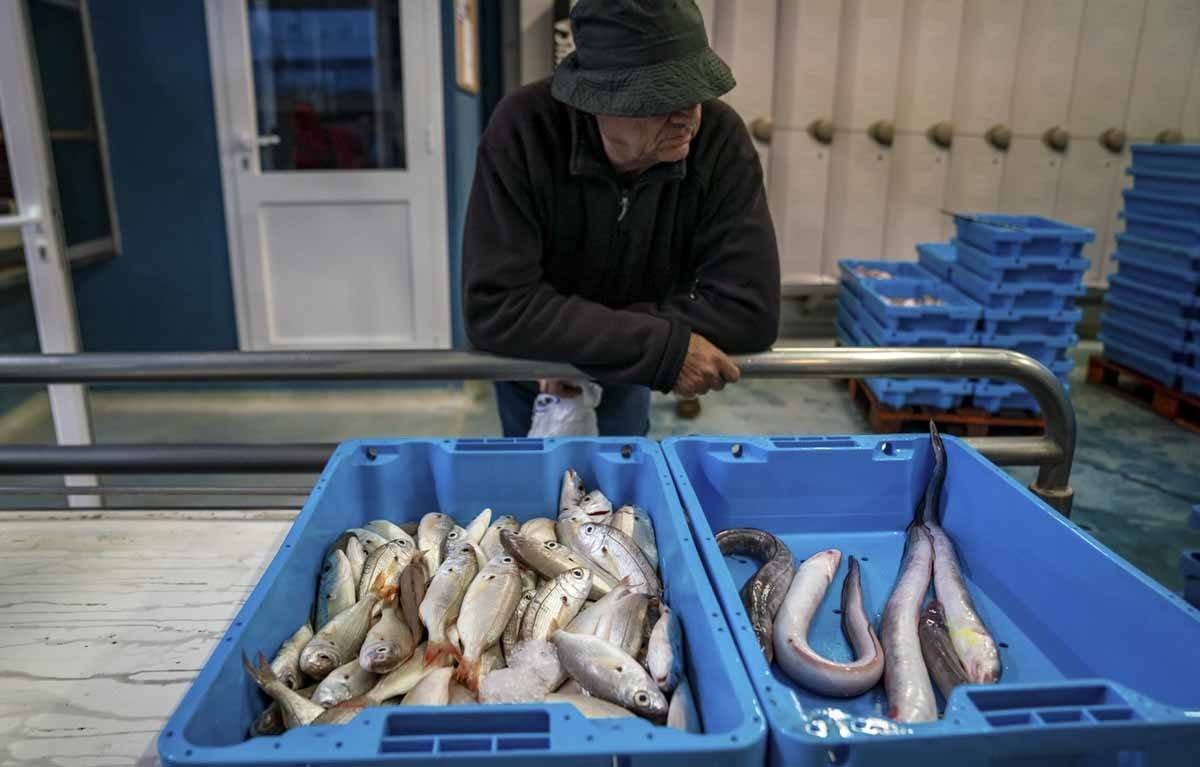
Alt Empordà includes the entire coastline between Portbou, on the Catalan/French border, to L’Escala – close to where we started our GR1 hike a couple of years ago.
Fishing is an important occupation in coastal towns – and naturally, there are plenty of excellent restaurants where you can enjoy the day’s catch.
In Llançà, a fishing town in Alt Empordà, you also have the chance to attend the subhasta del peix (seafood auction), taking place every day around 5 pm at the harbour, when fishing boats return from their outing.
There is no need to book or pay anything – you can just turn up and (politely) ask if you can see the auction. You’ll be shown to a small standing area next to the conveyor belt where the seafood is loaded, and you can take pictures at will – just make sure you don’t stand in anybody’s way.
One thing is certain – if you like fish, you’ll get hungry!
Visit a Civil War Bunker at Mas Llunes… and Drink Wine!
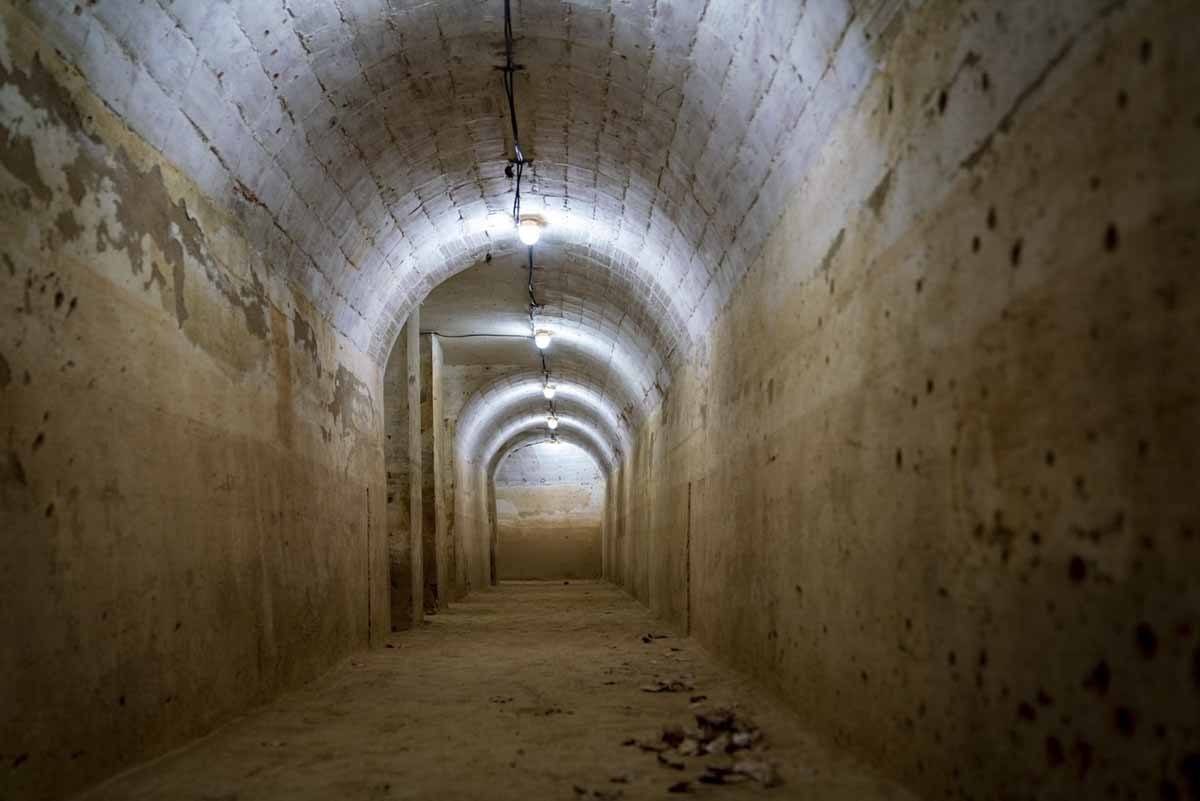
Another excellent reason to visit Alt Empordà is wine! Winemaking in the DO Empordà wine producing area, including both Alt and Baix Empordà, dates back 2500 years, from the establishment of the Greco-Roman trading post of Empúries along the coast.
Empordà wine is the as unique as its land, product of the vicinity between sea and mountains, and of the northerly tramuntana wind, common at these latitudes.
The village of Garriguella is a great place to choose as a base to learn more about Empordà wine. If you only have time to visit one winery, we recommend Mas Llunes, conveniently located near the village.
Ever since our trip to Stellenbosch, I have been a big fan of wineries that offer something else besides wine tasting. Mas Llunes is in the location of a Civil War battlefield, and there are still some bunkers on the estate – one of which can be visited.

Historic tours are on offer, taking visitors through the history of Mas Llunes during the Civil War, then for a walk through the bunker, and ending with wine tasting. A great reason to visit Alt Empordà, if you ask me!
Have Wine for Breakfast at Cooperativa de Garriguella
Alt Empordà is perfect if you like good food as well as good wine! In Garriguella, make sure you have at least one meal (more if possible) at Cooperativa Agricola de Garriguella, a cooperative of small producers and wine growers, where it’s possible to eat and buy local products.
If you visit for lunch and dinner, you can opt for a set menu or for a ‘plat del dia’ – you’ll find Catalan delicacies like escalivada (grilled vegetables with anchovies) and botifarra, barbecued sausage served with white beans.
For breakfast, you’ll be served a selection of local cured meats, olives and fresh, crusty bread – and you get free wine. With every meal. Including breakfast.
Isn’t that reason enough to love Alt Empordà?
Visit Sant Pere de Rodes

The Monastery of Sant Pere de Rodes is located on a hilltop overlooking Cap de Creus, with sprawling views over the coast all the way to the French border – and beyond.
It can be reached after a 2 and a half hour hike from Pau, which we had planned to do, but sadly we had to change our plans because of torrential rain. The Monastery was surrounded by clouds, hiding all the panorama, but lending instead a mysterious atmosphere to the monastery complex.
Sant Pere is a former Benedectine monastery, first established in the 9th century and built in Romanesque style. Visitors receive an audioguide, with information about history and life in the monastery, including its rise and decline.
The visit starts in the church, and continues including the double cloister, the bell tower and defensive walls. If you have time, it’s also worth including nearby Verdera Castle in your visit, only about 15 minutes walk away. The views are said to be some of the best in Alt Empordà!
Spend Time in Cadaqués

If I mention ‘Costa Brava’, most people will think about places like Lloret de Mar 20 years ago, with concrete-monster hotels and overcrowded beaches. This probably sounds like your holiday nightmare, and you’ll be tempted to skip Costa Brava altogether – until you’ll find out about Cadaqués.
Cadaqués is a whitewashed town, set in a secluded bay in the middle of Cap de Creus. Its location, plus the fact that it’s surrounded by a protected nature reserve, is probably the reason why it’s blissfully free from overdevelopment – most buildings are only a couple of storeys high, there are no big resorts, just boutique hotels or apartment rentals.
If you have heard of Cadaqués before, it will probably be because of its most famous resident, Salvador Dalí. You can still visit his former home in Port Lligat, a small village overlooking a bay just north of Cadaqués.
Cadaqués is a great place to spend a few days hiking along the coast, strolling the photogenic streets of the village, and enjoying some really good food. For more info, have a look at our post about the best things to do in Cadaques!
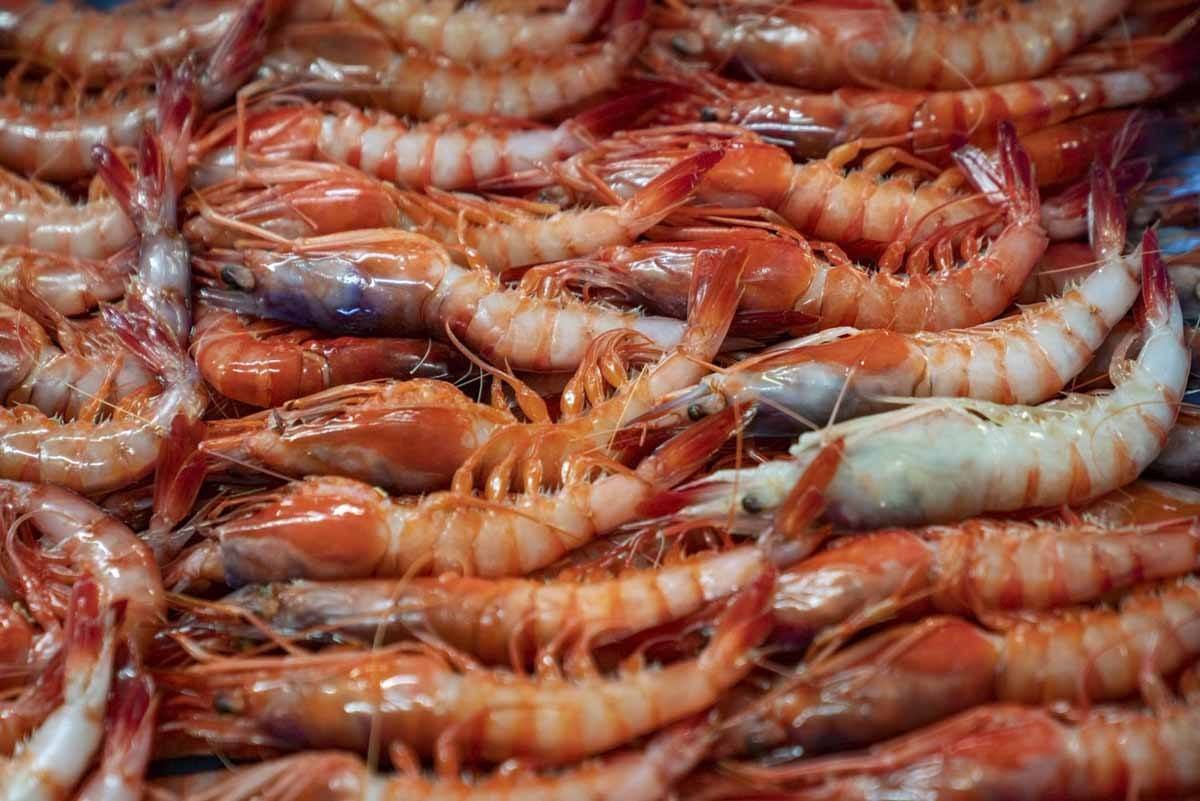
Have the Best Meal of Your Life at Compartir
If the beauty of Cadaqués wasn’t reason enough to visit Alt Empordà, this should really convince you. Compartir is a restaurant opened in 2012 by three young chefs who used to work at El Bulli, Ferran Adrià’s uber-famous restaurant in nearby Roses that closed in 2011.
The three chefs reinterpret the concept of tapas in a modern, creative way, offering inventive twists on Catalan classics that are always meant to be shared – the aim is, indeed, compartir.
You can order from a menu, or opt for a chef’s selection, including both classic offers and new experiments.
The result will be one surprise after another, dishes that play with your expectations and with textures like this one below – it looks like a caprese, but it’s in fact mozzarella foam with olive spheres, tomato confit, and macadamia nuts.
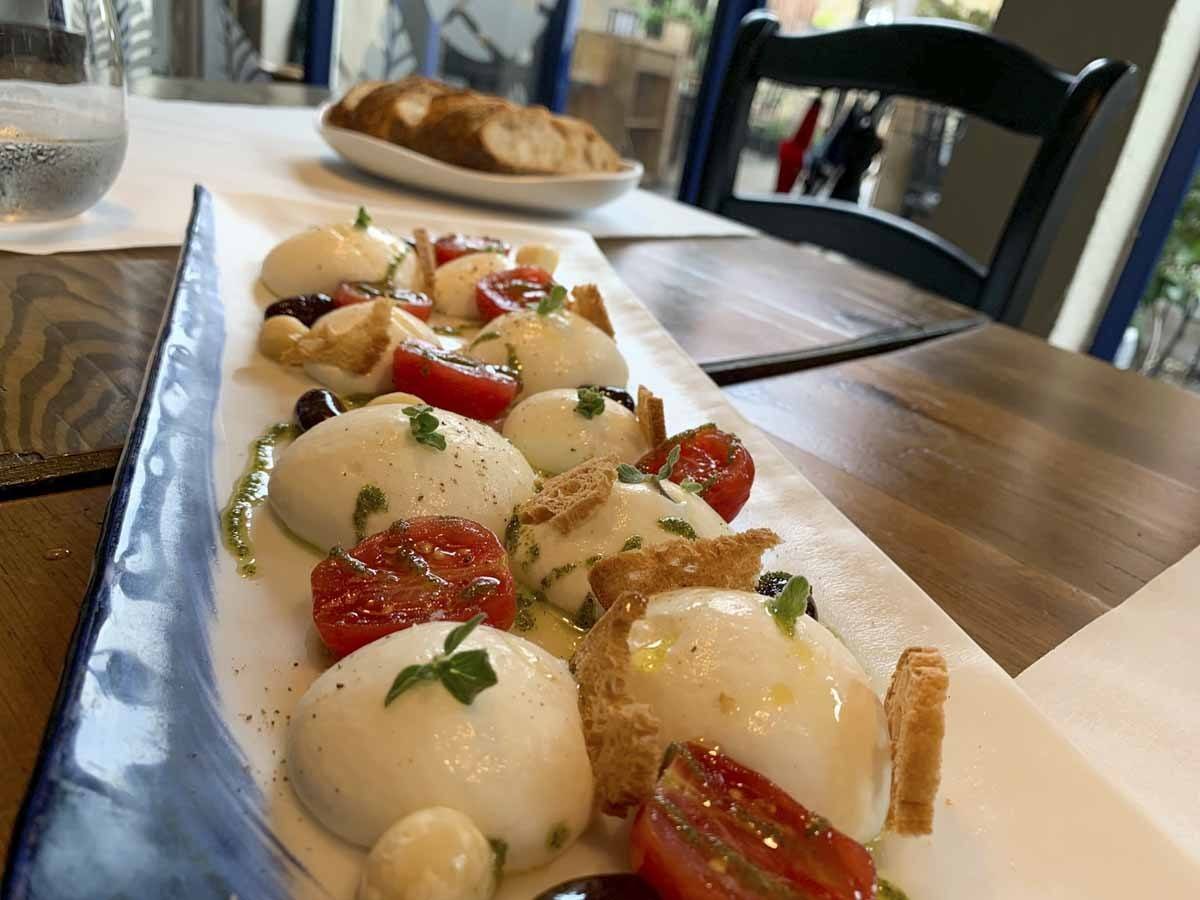
Make sure you get a reservation before your visit – you can easily book online through Compartir’s website!
Best Hikes in Alt Empordà
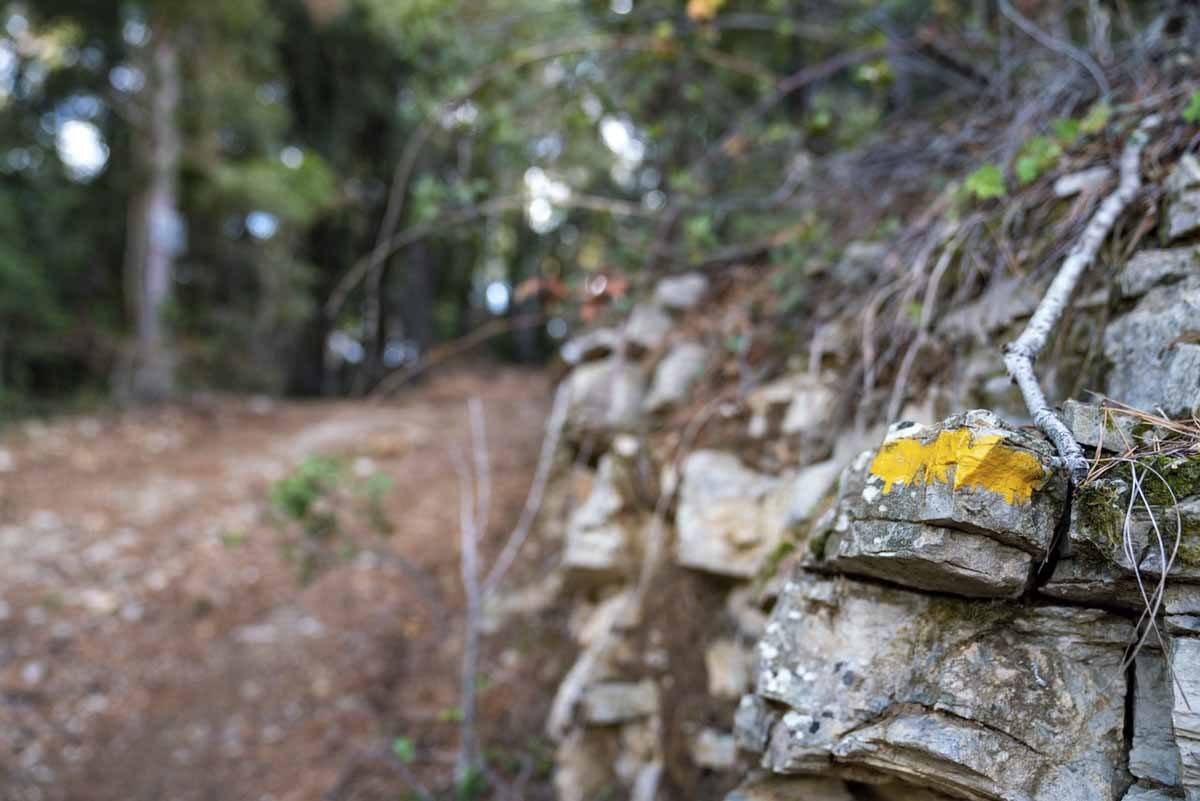
Alt Empordà offers a great mixture of hill, mountain, and coastal hikes, with something to offer for all difficulty levels. In the following section, we described four hikes – two coastal and two inland.
For more information and inspiration, please visit the Itinerannia website, a network including hundreds of hikes across the region. You can use the search option on the website to filter all the hikes available depending on length, difficulty level and geographical area, or plan your own hike with the route planner tool.
Paths and trails including in the Itinerannia network are also clearly marked with yellow signs and trail markers at all intersections – it’s almost impossible to get lost, even if you are terrible at directions (like me).
Hike Albanyà to Mare de Déu de la Salut – 17 km/7 hours
This hike starts at Bassegoda Park Campsite, where you can book the stargazing session described at the start of the article.
If you’ve been hiking in the Pyrenees before, just like we did, you’ll immediately notice you’re in a different area – there are umbrella trees instead of pines, and the scent of Mediterranean herbs (fennel, thyme, rosemary) instead of that of mushrooms.

The first part of the hike is mainly uphill, through a ‘maritime’ forest. All around us we could see the foothills of the Pyrenees, and in the distance, the actual mountain range, its peaks hidden by the clouds.
All through the forest, the path is wide and even. As soon as the path starts to descend towards the village of Sant Llorenç de la Muga, it gets super narrow and rocky, with broken up shale-like rock. Please watch your step as we almost tripped a couple of times. If you have hiking poles, now it’s time to use them!
Once you reach Sant Llorenç de la Muga, don’t enter the village – just cross the old bridge leading to a chapel, then turn left following the course of the river Muga.
Now you’ll be on the Camí del Muga, connecting various areas of natural interest in the Girona province, and providing a ‘natural corridor’ between the Pyrenees and Costa Brava.
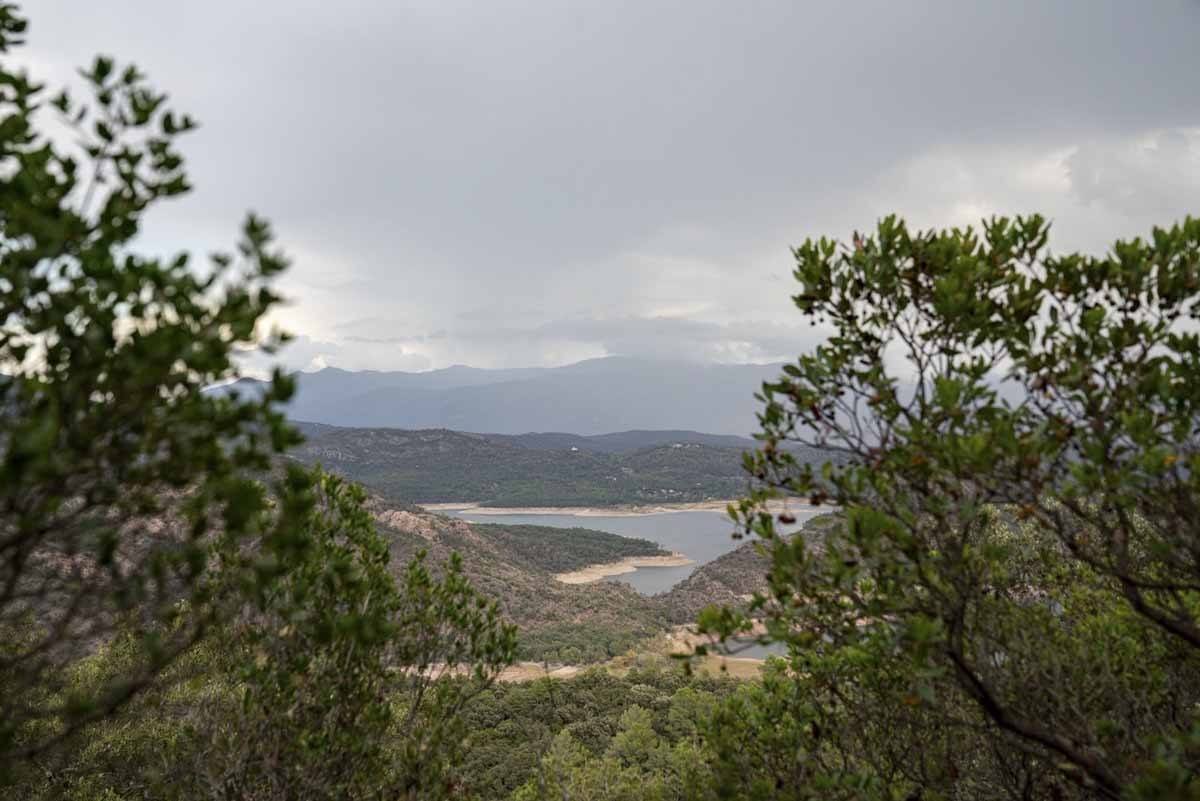
Then, the path will start to ascend again through a forest, while overlooking the Boadella reservoir. It’s a long and tiring day, so watch your step and try not to rush – the last stretch of this hike is actually the hardest one, and the path is really rocky and uneven.
You’ll be heading towards a ruined church with the Catalan flag flying just in front. You may be thinking that’s your destination – but you’ll have to keep going a further 20 minutes to the Mare de Deu de la Salut Sanctuary, where you can also spend the night.
Hike Mare de Déu de la Salut to Agullana – 14 km/4 hours
If you’ve spent the night at the Sanctuary and fancy hiking a little longer before exploring the Empordà wine region, this short hike may be just what you need.
From the Sanctuary, head towards Boadella and Terrades. You’ll be following a good downhill path for about an hour/an hour and a half, through a forest, walking on deep magenta earth.
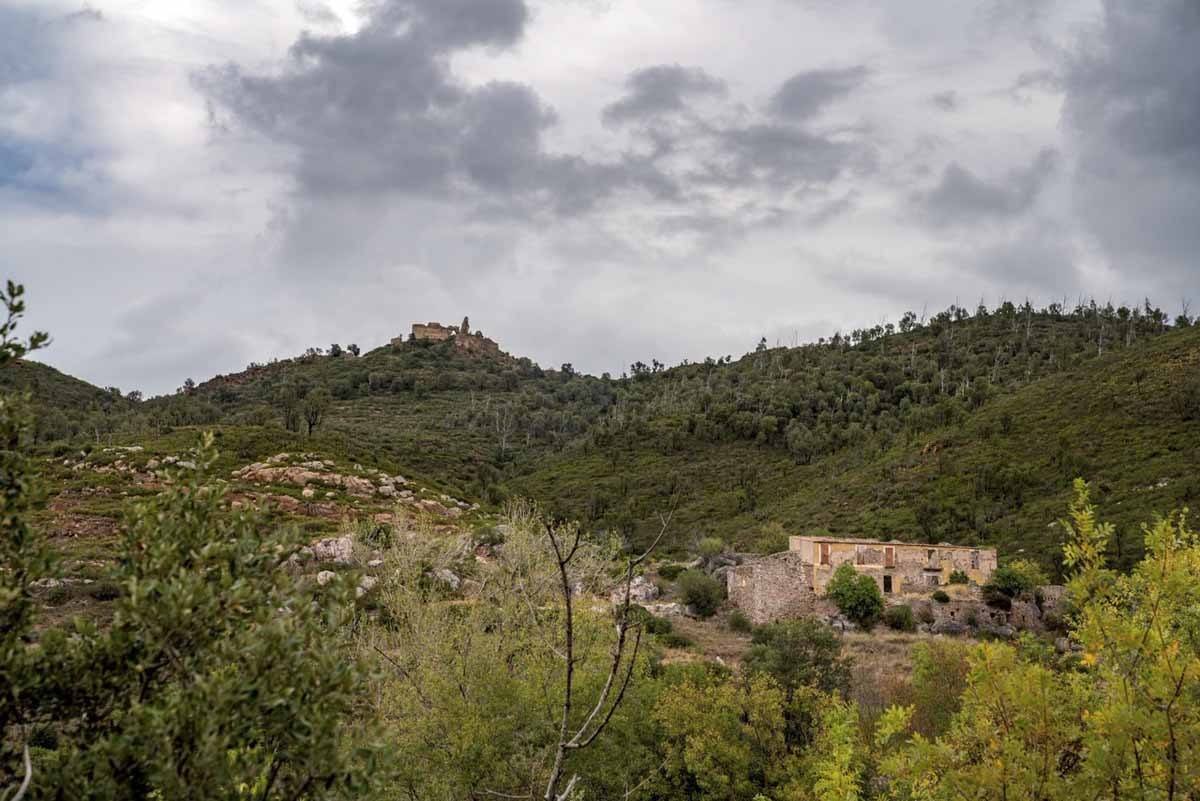
The trees will get more and more sparse the closer you get to Boadella, a fairly unremarkable town with not many people around.
The time of our visit coincided with a turn in the weather. The air was warm even though clouds travelled quickly through the sky, and the temperature kept changing – from warm, almost hot, to chilly when the tramuntana wind blew. Oblique light filtered through the clouds. A storm was brewing, but didn’t quite start.
After Boadella, the path runs along the GR2 and then Sant Jaume (Saint James) Way. Keep an eye on the yellow Itinerannia signs, present at every crossing with a road or path. Until Agullana, there is not much elevation difference, only some slight ups and downs.
The landscape is quite varied, too – you’ll be walking across farmlands, past abandoned houses, through a forest with cork trees and a small stream, along minor roads, and through clearings covered in Mediterranean shrubs.
You’ll also be getting fairly close to La Jonquera, marking the French/Catalan border – you may notice your phone switching to French signal. When you reach Agullana, we recommend organising transport to Garriguella for lunch at the delicious Cooperativa, only about 20 minutes drive away.
Cap de Creus to Cadaqués Coastal Hike – 9 km/3 hours
Cadaqués is right in the middle of Cap de Creus, a peninsula in the northeastern part of Catalunya, also including a protected natural park. Spending a day exploring the area, taking in the sights and coastal views, is a true must do for anyone visiting Cadaqués.
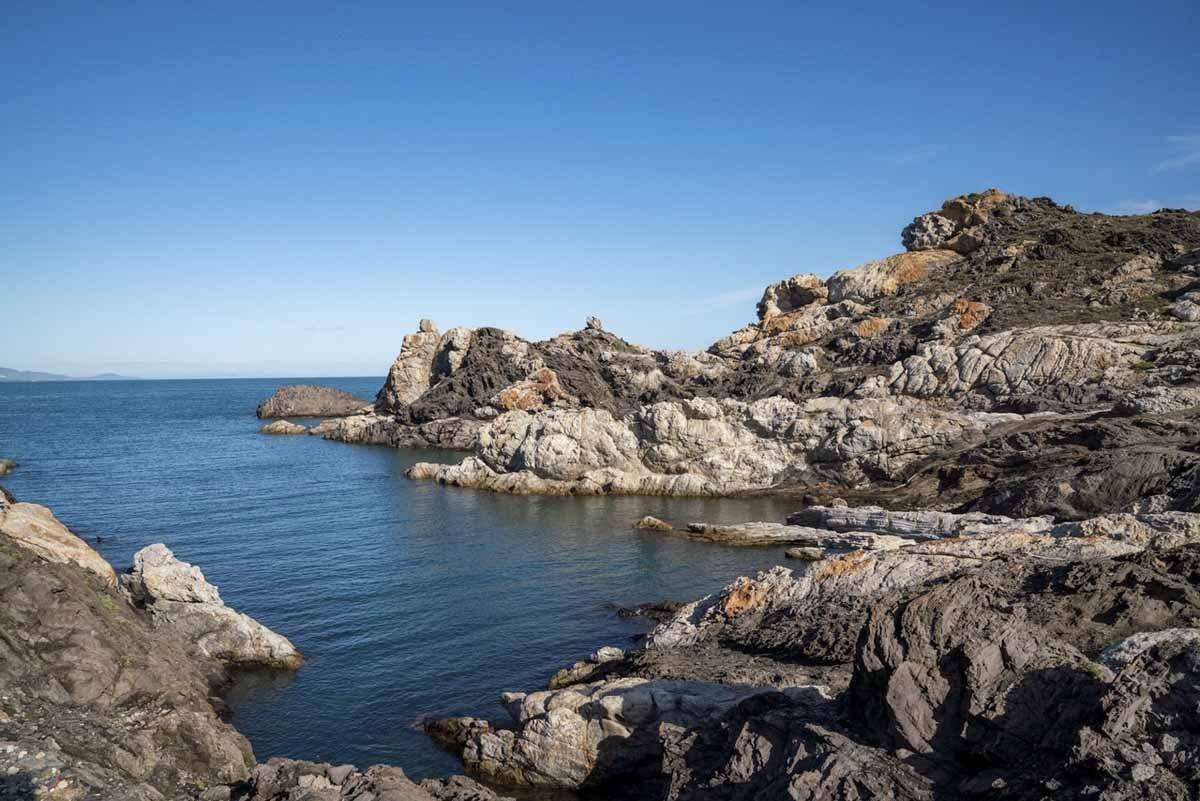
There are kilometers of trails all through the natural park – two of the best places to explore are the Cap de Creus lighthouse, the easternmost point in the Spanish Mainland, and Paratge de Tudela, a small nature reserve with spectacular views that Dalí used to visit regularly.
Before it became a protected reserve, Paratge de Tudela was home to a Club Med resort, which closed its doors in 2003. A team of landscape architects worked to remove the resort buildings without making too much of an impact on the land, turning whatever couldn’t be removed into viewpoints and installations.
Paths have been created leading visitors to rock formations that inspired Dalí to create some of his greatest paintings. It’s fun to try and spot them, guessing what Dalí named them – let’s see if you can guess what this one is! (hint – it’s a kind of bird… read till the end to find out!)
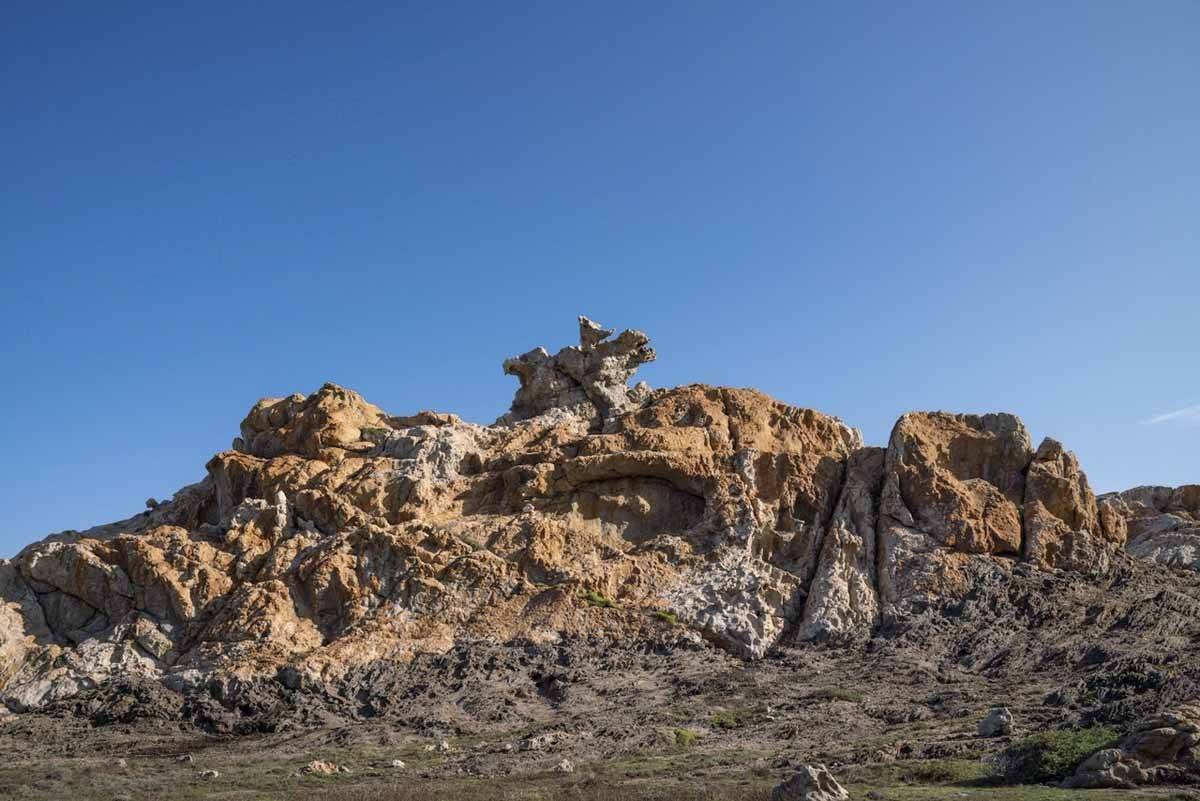
From Paratge de Tudela, it’s possible to hike back to Cadaqués in about 3 hours, visiting the lighthouse along the way. You’ll be walking along rocky trails, and paths made with neatly stacked stones, the same kind used to build dry walls all over Cadaqués.
If you’re lucky to visit on a sunny day like we did, you’ll remember this hike forever. For most of the hike, you’ll be walking among rocky shrubs, filling the air with the scent of the Mediterranean. The deep sapphire sky blends into the teal-coloured sea, and when the sun shines straight on the water, it looks like a sea of quicksilver.
The path crosses the nature reserve for approximately one hour and a half, then you’ll be walking past (amazing) houses all the way to Port Lligat, where you can also visit Dalí’s house!
Cala Nans Coastal Hike – 7 km/2 hours (return)
Are you up for a hike, but don’t fancy spending most of your day walking around? I have just what you need – an easy, fun hike to the Far de Cala Nans, a lighthouse just an hour away from the centre of Cadaqués.
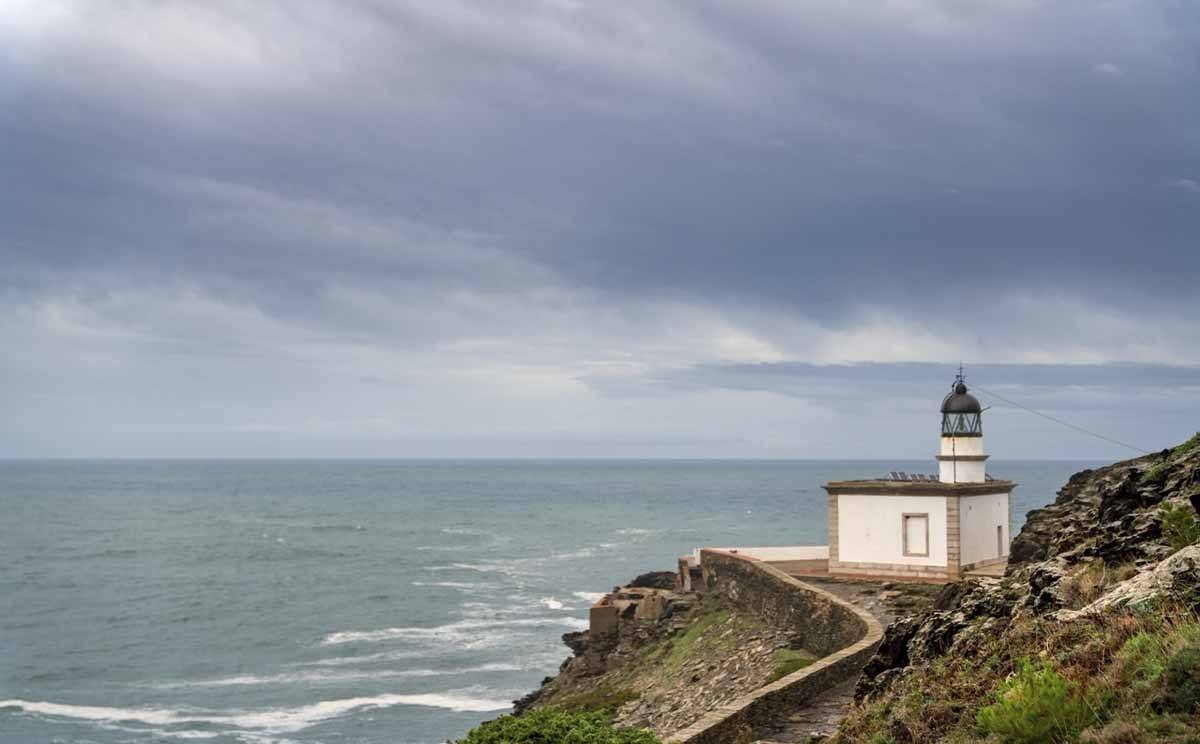
First you’ll have to cross the historic town with its tiny street and whitewashed houses. Make sure you pay a visit to the Church of Santa Maria, the most notable feature in the Cadaqués skyline, with a flamboyant Baroque retablo inside.
The path to Cala Nans is not marked with yellow signs like all other Itinerannia paths, but with hand-painted slate signs. The path climbs steeps almost right away, leading you past a couple of beaches and then over some narrow coves, with the lighthouse getting closer and closer in the distance.
In summer, you can stop for a swim at Platja Sa Conca or Platja es Sortell, and don’t forget to take a picture of Es Cucurucuc, a rocky islet named after the rooster’s crow.
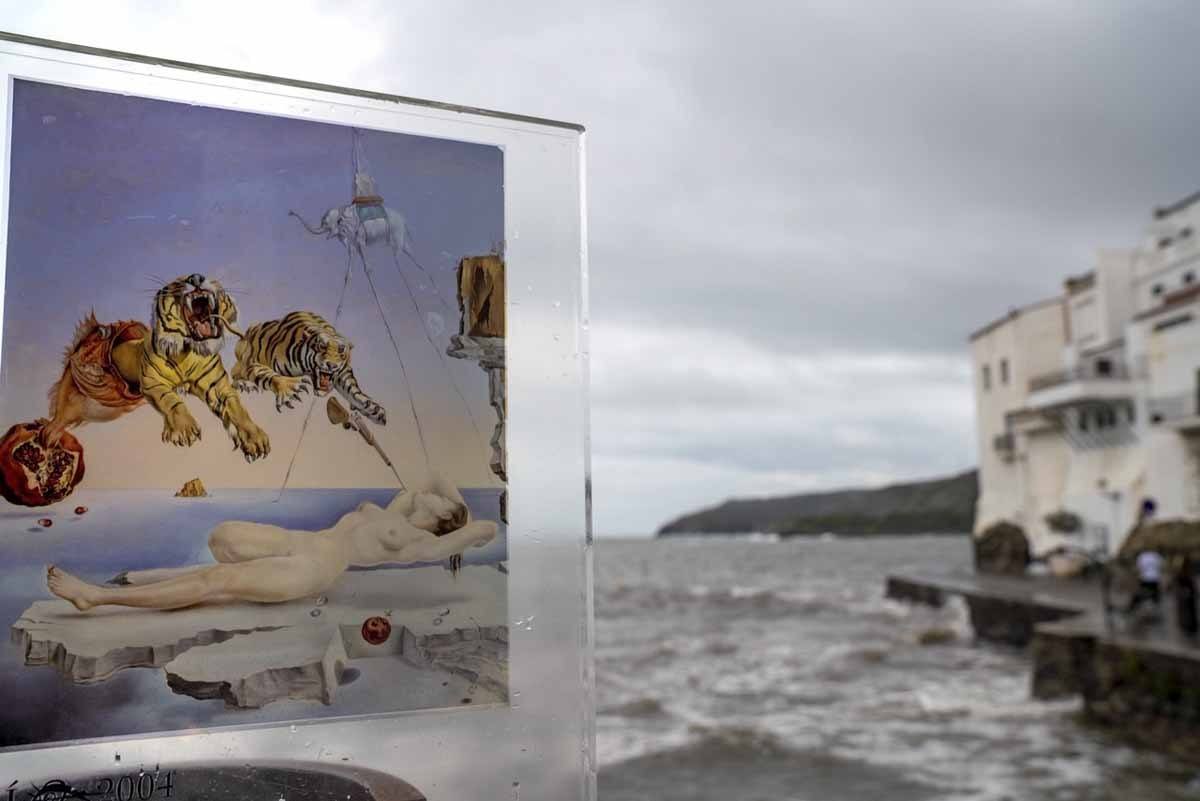
The day we visited was dark and stormy, with the sea lashing the rocky coast incessantly, the tramuntana whipping our faces while the rain fell in heavy showers.
It looked, and felt wild – an adjective you may not immediately associate with the Spanish coast. After all, the Brava in Costa Brava means ‘wild’, and nowadays it’s hard to find pockets of wilderness in an overly built, overly-touristed world.
We would like to thank the Patronat de Turisme Costa Brava Girona for having welcomed us again. Moltes gracies Dunia! Many thanks to Itinerannia for putting together such a wonderful itinerary for us! If you are still trying to guess what the rock looked like, it’s time for me to reveal it! It’s an eagle!
